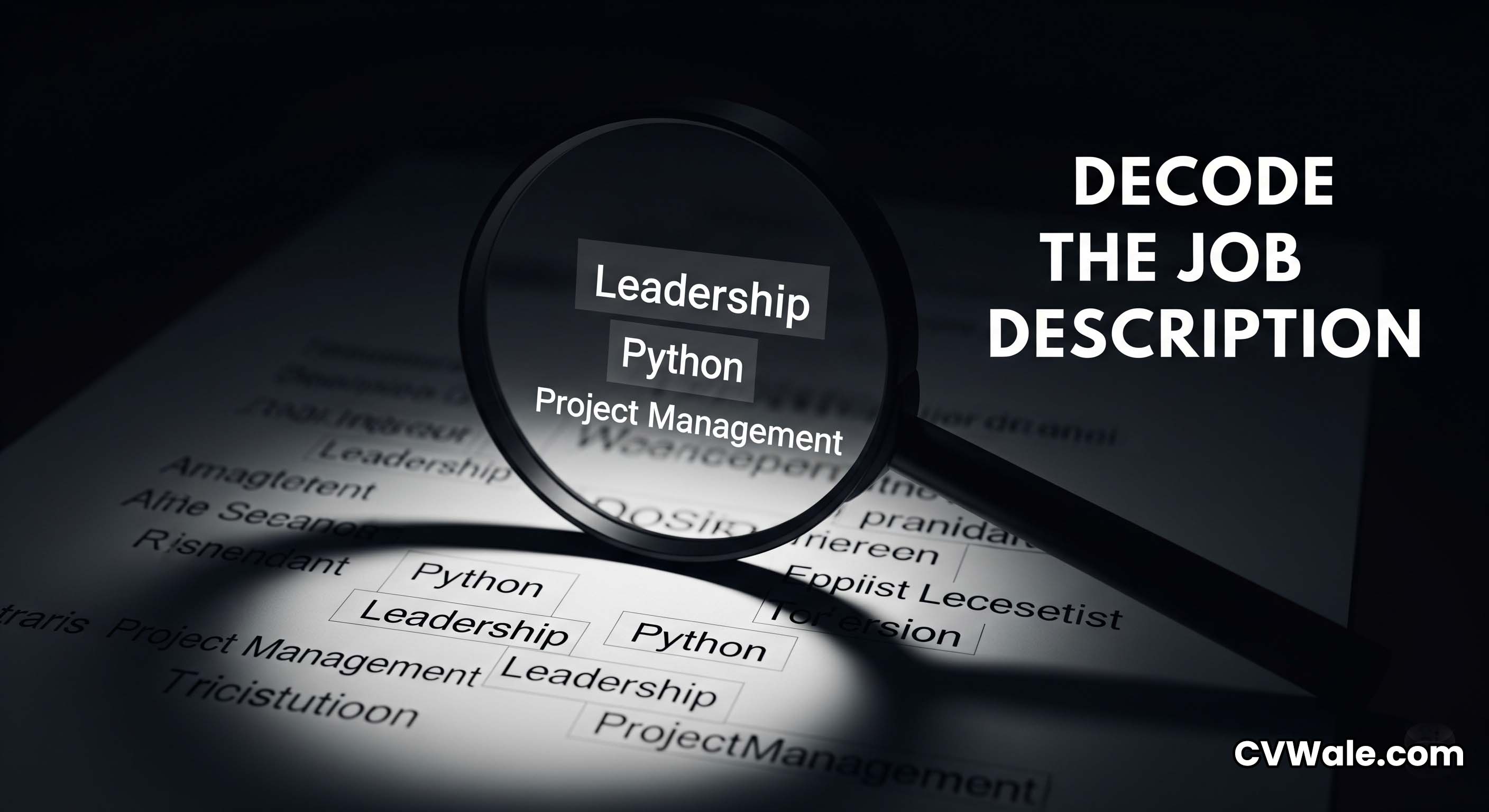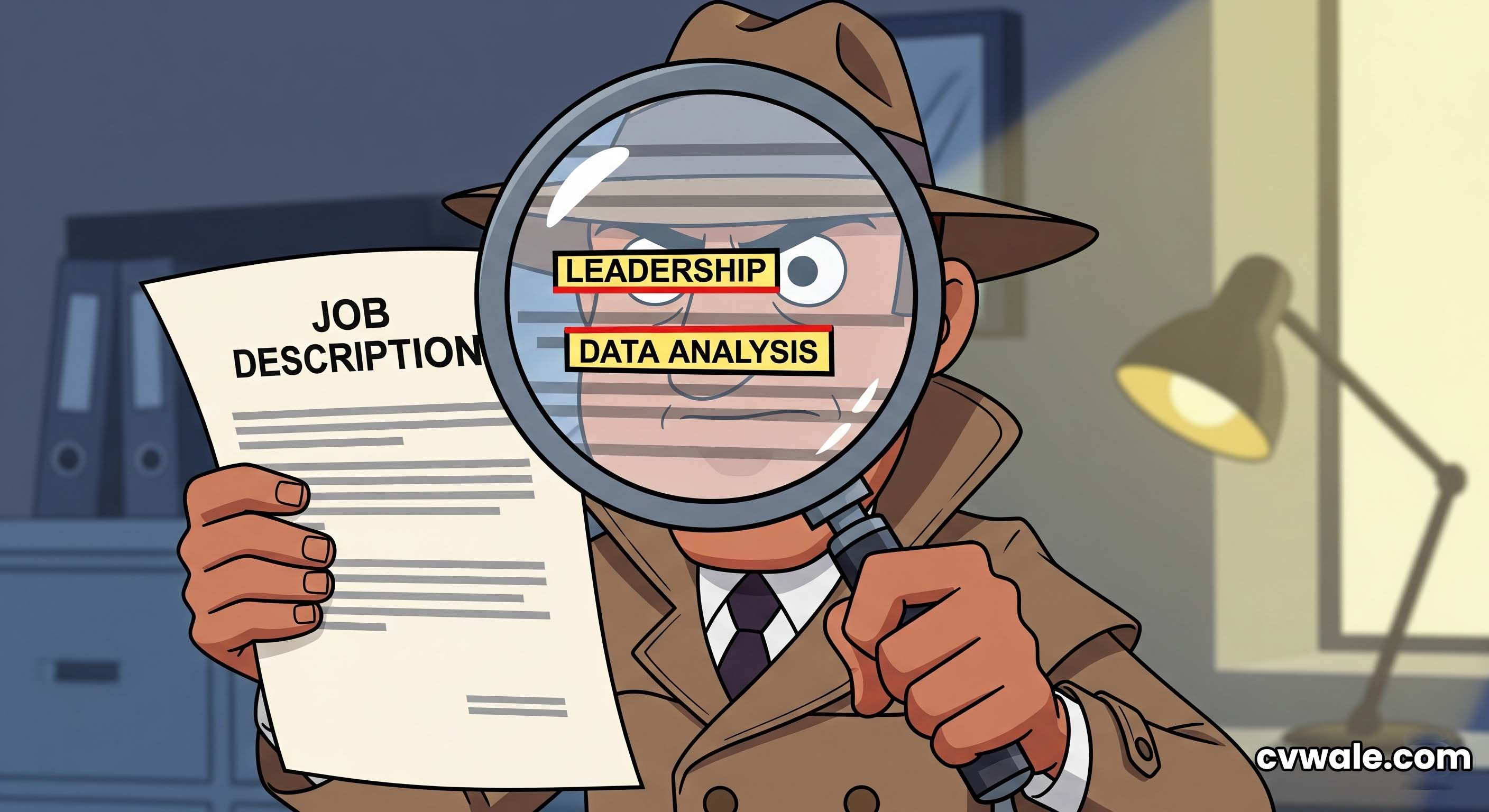How to Read a Job Description (And Find the Keywords Recruiters Want)

In the process of applying for a job, the job description (JD) is the single most important document, yet it's the one most often overlooked by candidates. Many job seekers simply skim the job title and the company name, hastily decide they're a good fit, and send off a generic CV. This is a recipe for rejection. A job description is not just an advertisement; it's a "cheat sheet" provided directly by the employer, telling you exactly what they are looking for, what problems they need to solve, and what language they use to describe their ideal candidate. Learning how to properly read and decode a job description is the secret to crafting a highly targeted, keyword-rich CV that will sail through Applicant Tracking Systems (ATS) and capture the attention of a human recruiter. This guide will teach you how to analyze a JD like a detective, so you can tailor your application for maximum impact.
The Anatomy of a Typical Job Description
Most job descriptions follow a standard structure. Understanding each part is key to extracting the right information.
- Job Title: Pay close attention to the specific title and level (e.g., "Junior Developer," "Senior Marketing Manager," "Associate Director"). This indicates the level of experience and responsibility expected.
- Company Overview: Don't skip this part. It often contains clues about the company's culture, values, and mission, which are great to reference in your cover letter.
- Job Summary: A brief, high-level overview of the role's purpose. This section sets the overall context.
- Responsibilities/Duties: This is a goldmine. It's a detailed list of the day-to-day tasks and key functions of the role. This section tells you exactly what keywords to use when describing your own experience.
- Qualifications/Requirements (Must-Haves): This is the most critical section for ATS. It lists the non-negotiable skills, years of experience, and educational background required. If you don't meet most of these, your application is unlikely to pass the initial screening.
- Preferred Qualifications (Nice-to-Haves): These are the skills and qualifications that will make you a standout candidate. If you have any of these, be sure to highlight them prominently.

How to Read Between the Lines and Decode What They *Really* Want
1. Identify Hard Skills vs. Soft Skills
As you read, create two lists. Hard skills are the teachable, technical abilities (e.g., "Python," "Salesforce," "AutoCAD"). Soft skills are the interpersonal qualities (e.g., "team leadership," "strong communication," "adaptability"). Your CV needs to demonstrate a strong mix of both.
2. Look for Repetition and Emphasis
If a particular skill or responsibility is mentioned multiple times in the JD (e.g., "data analysis" appears in the summary, responsibilities, and qualifications), it is a top priority for the employer. This keyword MUST be featured prominently in your CV, ideally in your professional summary and relevant work experience.
3. Understand the Company Culture
Pay attention to the adjectives used. Do they say "fast-paced startup environment"? That means they are looking for someone who is adaptable and can handle pressure. Do they mention "work collaboratively with cross-functional teams"? That means teamwork is a core value. Use these clues to tailor the tone of your cover letter and the examples you choose for your CV.
Creating Your Keyword "Cheat Sheet"
The most effective way to use the JD is to create a simple "cheat sheet" to guide your CV writing. Create a table with three columns:
| Keyword/Phrase from JD | My Matching Skill/Experience | How I'll Phrase it on the CV |
|---|---|---|
| "Manage social media campaigns" | Managed Facebook & Instagram at XYZ Corp | "Managed and executed successful social media campaigns across Facebook & Instagram, increasing follower engagement by 30%." |
| "Analyze campaign performance" | Used Google Analytics to track metrics | "Analyzed campaign performance using Google Analytics to provide monthly reports and data-driven insights for strategy optimization." |
| "Collaborate with the design team" | Worked with designers on ad creatives | "Collaborated closely with the design team to create compelling visual assets for digital ad campaigns." |
This simple exercise forces you to directly map your experience to the employer's needs, making your CV incredibly targeted and powerful.
Using Your Findings to Craft a Winning Application
Once you've decoded the JD and created your cheat sheet, the rest is easy.
- Your CV: Sprinkle the keywords and tailored phrases you've developed throughout your professional summary, skills section, and work experience bullet points.
- Your Cover Letter: Use the insights about company culture and the role's main challenges to write a compelling letter that explains *why* you are the right person to solve their specific problems.
Stop treating job descriptions as simple announcements. Start treating them as the detailed blueprints they are. By investing the time to properly decode what a recruiter wants, you can move from a generic applicant to a standout candidate. Once you have your keywords and tailored phrases ready, use a tool like CVWale to quickly and easily build the perfectly customized CV that will get you noticed.
